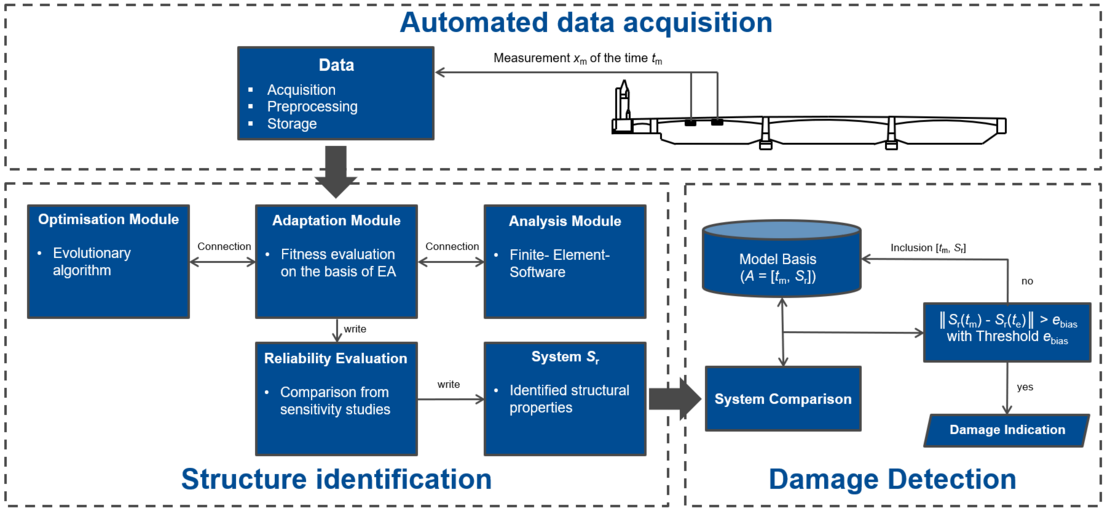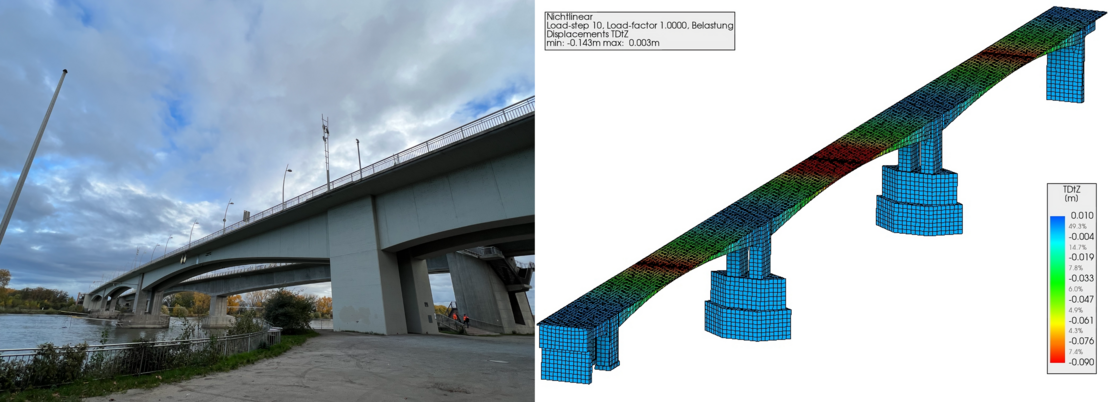Detailed FE modelling of the Nibelungenbrücke
The goal of the project C05 is to develop a monitoring concept with implemented damage detection based on a non-linear model adaptation. By iteratively modifying the parameters of a FE model, its response is adapted as precisely as possible to measured values stored in a database on the real structure, thus enabling identification of the load-bearing structure and assessment of the structural condition. Structural identification involves the use of artificial neural networks (ANN) and evolutionary algorithms (EA) to adapt the model parameters and increase the reliability of the identified models. The prototypical monitoring concept (Figure 1) will then be evaluated using numerically generated measurement data.

For a more detailed representation of the validation structure (the Nibelungenbrücke, Figure 2), the most accurate modelling of damage and a precise connection to the digital twin, a parameterised FE model of the bridge was modelled with a total of 713620 nodes on 34670 3D elements (Figure 2). The model is made up of the element types CHX60, CPY39, CTE30 and CTP45 and was modelled using the finite element software DIANA FEA. In order to model the bridge realistically, as-built data such as Pre-tensioning instructions, results of drill core extractions and formwork and reinforcement plans were used. The geometry of the tendons and the statically required reinforcing steel was modelled realistically and their stiffness was added to the associated elements. In addition to the geometric non-linearity, the calculation also considers the complex material behaviour of concrete. In addition to the linear material parameters, the material model also includes the crack model, the tensile, compression and shear behavior, the crack energy and the damping.
The detailed FE model can be used to identify influences on deflections and strains as a result of variable parameters and to verify observations on the structure, such as the development of cracks. In further work of the research project, the model is connected to the evolutionary algorithm to adapt the FE model to the initially numerically generated measurement results. By implementing higher-order damage-functions in the FE model, damage can be simulated more realistically and detected at a later stage.




